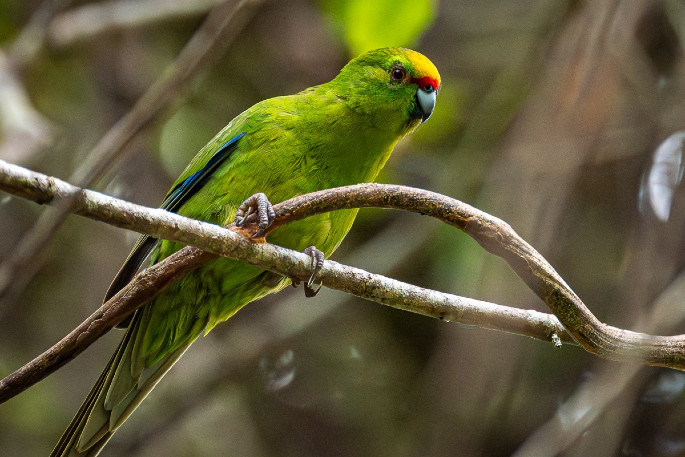This Content Is Only For Subscribers
South Westland has seen a resurgence in birdlife, with increased sightings of the kākāriki (yellow-crowned parakeet) underscoring the success of local conservation work.
The dedicated efforts of Predator Free South Westland, Zero Invasive Predators, and local businesses and conservation groups are helping native bird populations thrive, which is enhancing ecotourism experiences in the area.
Paula Sheridan and Swade Finch from Ōkārito Boat Ecotours have been witnessing the increase in birdlife firsthand.
“Swade and I have had the privilege of exploring the Ōkārito lagoon nearly every day for 17 years. Over the past two years, we’ve noticed an extraordinary transformation in our local birdlife, and we credit this remarkable change to the efforts of ZIP in South Westland,” Paula says.
The return of the kākāriki has been especially exciting.
“When we first moved here, we were told they once thrived around the edges of the village, but I had never seen or heard one until this year. Now, a short walk into the forest and they are suddenly everywhere,” Paula says.
Barry Hughes from Ōkārito Kayaks sees the resurgence of the kākāriki as a symbol of ecological recovery.
“We’re seeing and hearing kākāriki regularly – kayaking in the quiet river channels where the only noise is native birdlife or walking with our kids on local tracks. We used to only hear the chattering, laughing call of the kākāriki every six months or so; now it’s every week pretty much, with frequent sightings of small flocks flitting above us on the water.”
Recently Barry and partner Gemma took their young children on a birthday walk through the forests, where they heard the kākāriki calling back and forth.
“It’s wonderful to see our natural heritage being restored for all our kids’ futures,” he says.
ZIP operations director Duncan Kay says they are also noticing a change in the behaviour of kākāriki.
“We’ve observed kākāriki foraging on the ground, which is new. In the past, they have tended to stick to the safety of the canopy, away from rats and stoats,” he says.
“A few months ago, one of our rangers, a passionate bird nerd and prolific eBirder, found himself in the midst of a feeding group of at least 24 kākāriki while on a short walk around the Pakihi Lookout (Ōkārito).
“He was blown away, absolutely buzzing – he had never seen anything like it. It’s thrilling and very motivating to see such a tangible result of predator elimination, our taonga species flourishing in a predator-free landscape.”
The impact of local predator control measures is also evident in the Waitangiroto Nature Reserve near Whataroa.
“The dedicated predator control work of local community groups, tour operators and businesses, DOC, and ZIP is really starting to pay dividends as predator-free South Westland expands its boundaries,” says Dion Arnold from White Heron Sanctuary Tours.
“Two years ago, we started hearing kākāriki occasionally, and over the last six months we have seen an increase and had some great sightings in the area. It’s rewarding to experience the positive results of the trapping work we do and be able to share this with locals and visitors.”
In addition to the resurgence of kākāriki, other native birds like fernbirds, bellbirds, tui, kereru, tomtits, fantails, South Island robins, kea, and kaka are also flourishing.
“Our gardens and forests are alive with the activity of various bird species. Perhaps best of all, not only are the forest birds more abundant, but their behaviour has also changed—they seem more fearless and comfortable around us,” Paula says.
Barry believes the return of these birds is a testament to conservation work in the area.
“Our kayakers and ourselves are noticing and hearing a truly remarkable abundance of bird calls, especially in what were quiet rivers feeding the lagoon – remarkable enough to sit back and be lulled into just drifting along, listening to the NZ bush as it used to be. The return of a genuinely awe-inspiring local abundance is a wonderful achievement for ZIP’s work in Predator Free.”
Development West Coast nature economy project lead Zak Shaw says a high alignment exists between the early successes of Predator Free South Westland and visitor demand for uplifting experiences in nature.
“Amongst the top reasons for people visiting the region include connecting to nature, birdwatching, sightseeing and short walks,” he says.
“ZIP’s work is bringing a return in birdlife to South Westland forests, enhancing people’s experiences in nature and diversifying the region’s value proposition”.



